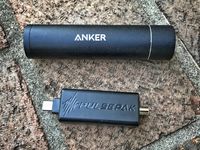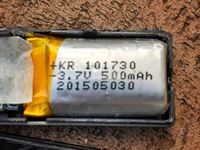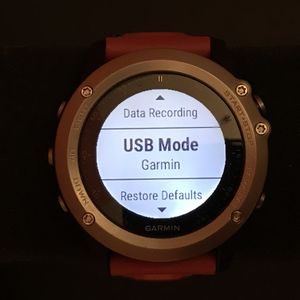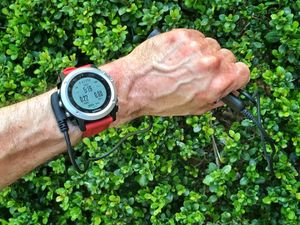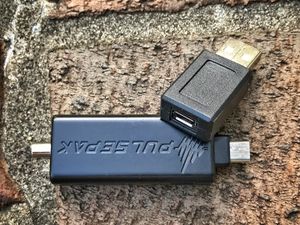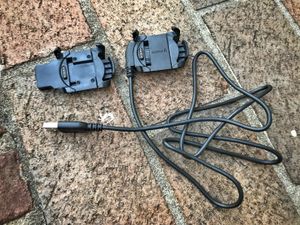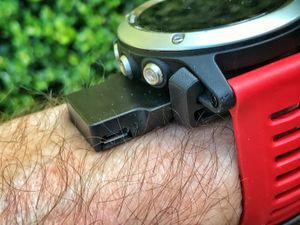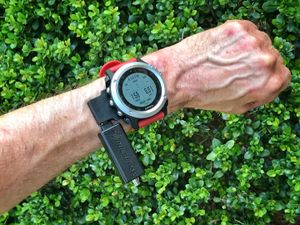Charging a watch while running
Even the Best Running Watch doesn't have the battery life for longer ultramarathons. Even those with the longer battery lives ten to run out around 20-24 hours, and that's under optimal conditions. Most runners in a 100-mile race will need a little longer at least. One option is to reduce the GPS polling interval, which bumps the battery life up to 30-200-hours depending on the watch, but this can also cripple GPS Accuracy. Another option to consider is to charge the battery while running, something that can work quite well.
Most watches have fairly low capacity batteries, far smaller than a smartphone, so it doesn't take much to top them up. For instance, the Garmin Fenix 3 has about a 350 mAh (milliamp-hour) battery, so the problem is generally finding a battery pack that's small enough, as batteries tend to be heavy. My two preferred options are below, the Anker and the PulsePak.
The Anker is much bigger (3.75"/9.5cm) and heavier (2.9oz/82g), though it's shape makes it easy to carry in your hand and it will slip into the pockets of Race Ready shorts. It holds 3,350 mAh, which is way more than you need, recharging the Fenix 3 over ten times. It's reasonably priced at Error: Could not parse data from Amazon!. The PulsePak is far smaller (2"/5cm), lighter (0.5oz/15g), and cheaper at Error: Could not parse data from Amazon!. It only holds 500 mAh, but that's enough for a full charge, and it's small enough to carry a couple.
Contents
1 Charging in the Rain
One concern I have with this approach is the issue of charging the watch in the rain. I've never tried this, and I'm a little concerned that something might short-circuit and damage the watch. If anyone has any experience with this, please let me know.
2 Which Watch?
Obviously, you'll need a watch that supports charging while recording an activity. This means that some otherwise likely candidates such as the Garmin 920XT are out of the question, as they terminate the recording soon as they connected to power. Other watches, such as the Garmin Fenix 5X are poor choices because the location of the charging port means you can't wear the watch while it's charging. You could put these watches in a pocket or backpack, but that rather defeats the object of having a running watch when you can't see the display. This leaves us with a number of choices, and I've described the ones I feel a best below.
3 Garmin USB Mode
It's important to note that many Garmin watches have to have the USB mode set to "Garmin" to get the them to charge on the run and still display your data.
4 Garmin Fenix 3
The Fenix 3 is a great choice, as it has a good battery life, and the charging dock fits under the watch quite comfortably while you're wearing it. You can use the standard charging dock and cable that came with the Fenix 3, holding a battery in your hand, which is shown below. I'm not a fan of this approach as the battery occupies your hand and the cable is rather long. You can tuck the battery in a pocket, but then the cable really annoys me. (Putting the watch and battery in a pack or pocket seems to defeat the object of having a watch if you can't see it.)
You can use an adapter to use the PulsePak with the Garmin charger which requires a full size USB plug, which makes the batter lighter, but still isn't ideal.
Inspired by David Jackson's blog], I decided a better approach is to use an aftermarket dock. The advantage of the aftermarket dock is that it has a microUSB socket rather than a cable, which is Error: Could not parse data from Amazon!. While the quality of the aftermarket dock is not quite as good as the Garmin original, it's surprisingly close. Because the dock sits under the watch, it naturally stays in place.
Here you can see the microUSB socket with the dock worn under the watch. The underside of the dock does not cause me any problems, such as skin irritation or pressure points.
Here's the PulsePak plugged into the dock while being worn. I've not had a problem with the battery sticking out. You could use a micro-USB extension cable and tuck the battery into the wristband of the watch, but I preferred this simpler approach.
I find it's a little more comfortable worn over a wrist band. The thickness of the wristband combined with the thickness of the dock does make the watch feel a little more cumbersome, but I found I was boosting the battery charge by about 50% in half an hour, so you shouldn't be wearing it for an extended period.

